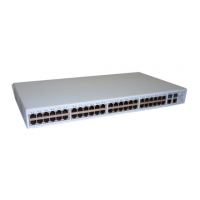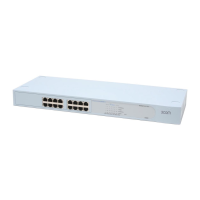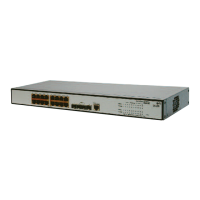62 GLOSSARY
network
A network is a collection of computers and other
computer equipment that are connected for the pur-
pose of exchanging information or sharing resources.
Networks vary in size, some are within a single room,
others span continents.
ping
Packet Internet Groper. An internet utility used to
determine whether a particular IP address is online. It
is used to test and debug a network by sending out a
packet and waiting for a response.
protocol
A set of rules for communication between devices on
a network. The rules dictate format, timing, sequenc-
ing and error control.
RJ-45
A standard connector used to connect Ethernet net-
works. The “RJ” stands for “registered jack.”
server
A computer on a network that is shared by multiple
end stations. Servers provide end stations with access
to shared network services such as computer files and
printer queues.
SFP
Small Form Factor Pluggable (SFP) Connectors are
based on an open standard that enables hot swap-
ping of various types of fiber optic and copper-based
transceivers into the host equipment.
subnet address
An extension of the IP addressing scheme that allows
a site to use a single IP network address for multiple
physical networks.
subnet mask
A subnet mask, which may be a part of the TCP/IP
information provided by your ISP, is a set of four
numbers configured like an IP address. It is used to
create IP address numbers used only within a particu-
lar network (as opposed to valid IP address numbers
recognized by the Internet, which must assigned by
InterNIC).
subnet
A network that is a component of a larger network.
switch
A device that interconnects several LANs to form a
single logical LAN that comprises of several LAN seg-
ments. Switches are similar to bridges, in that they
connect LANs of a different type; however they con-
nect more LANs than a bridge and are generally more
sophisticated.
TCP/IP
Transmission Control Protocol/Internet Protocol. This
is the name for two of the most well-known protocols
developed for the interconnection of networks. Origi-
nally a UNIX standard, TCP/IP is now supported on
almost all platforms, and is the protocol of the Inter-
net.

